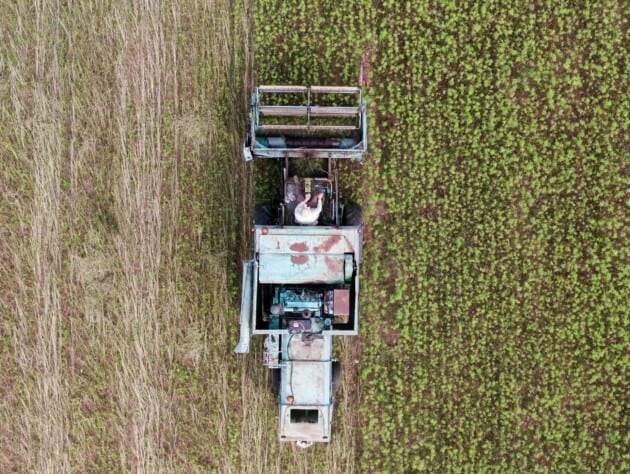Transitional Cotton At-a-Glance
“In-conversion” cotton is produced by farmers moving towards organic practices.
Establishing organic ways of farming requires an interim period, known as “in-conversion” or “transitional.” During that period, farmers must fully comply with certified organic requirements, with certification bodies conducting annual audits. As demand for organic cotton continues to dramatically rise, in-conversion supports the transition of more conventional land into organic production, to ensure a future supply.
CHALLENGES
Farmers need clear signals that there’s a market for in-conversion.
Organic cotton is grown using methods that prioritize ecological processes, biodiversity, and soil health. Its production avoids hazardous synthetic pesticides, fertilizers, and genetically modified seeds, instead relying on natural fertilizers, biological pest control methods, and practices such as crop rotation or cover cropping. However, to adopt these organic practices, farmers need economic assurance.
SOLUTIONS
We’re urging brands to support farmers in their transition to organic.
By raising awareness and building demand for in-conversion cotton within the fashion, textile and apparel industry, we’re showing farmers that a viable market exists for their product. When brands commit to sourcing in–conversion cotton over the long term, it gives farmers’ confidence to produce it. Together, we can accelerate the transition and support the long-term growth of organic cotton production.
OCS
Our industry standard for organic content
The Organic Cotton Standard (OCS) is our international voluntary standard that sets requirements for third-party certification of organic input and chain of custody. In January 2021, we released guidance that permits in- conversion material to be verified under the OCS, as long as the standard isn’t referenced in public-facing claims.

Resources
Dive deeper into in-conversion cotton
FAQs
Find the answers to questions about in-conversion cotton.
If you have a question not answered here, get in touch with us directly, and we’ll be happy to answer it for you.
Do yields change during the in-conversion years?
Because farmers can no longer use quick fixes like conventional pesticides and synthetic fertilizers, they may experience a temporary drop in yields while they give their new organic systems the chance to develop healthy soils and adopt non-chemical pest management methods. Without support or longer-term guarantees of a market, converting to organic is a big risk for farmers. That’s why it is vital that farmers are supported in this time.
LEARN MORE
Explore the rest of our resources
Can’t find what you’re looking for? You can access all documents and webinars relevant to our standards through our knowledge center.